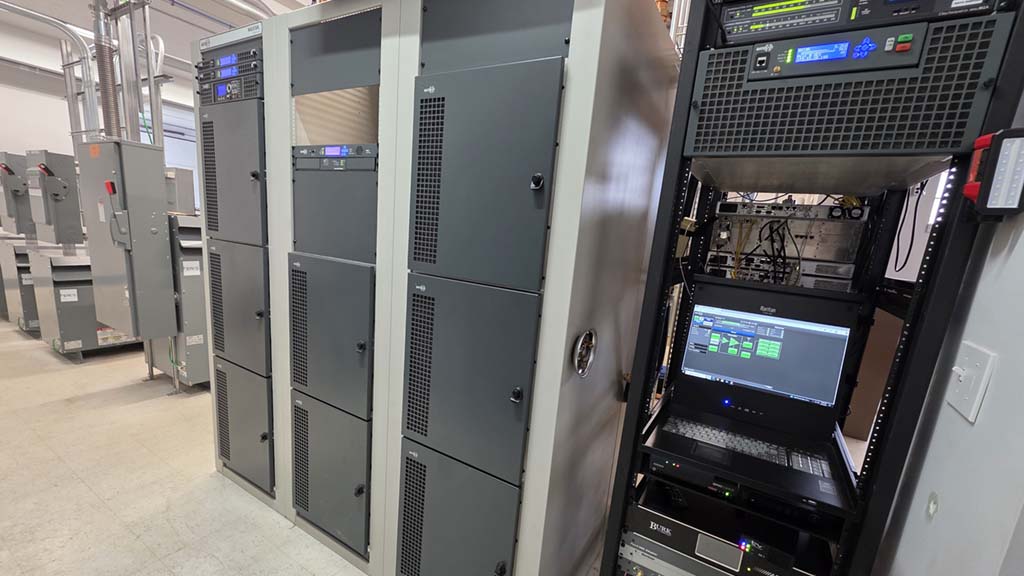Quincy’s WGEM-DT Transitions to UHF Liquid-Cooled System With GatesAir
New transmitters eased Illinois NBC affiliate’s transition from VHF, improving its coverage

QUINCY, Ill.—During its 72 years on the air, WGEM-DT has continuously operated through several transitions, including ownership and network affiliate changes. Licensed to the city of Quincy, Illinois, we had been operating from a broadcast tower situated in a residential neighborhood.
Seizing the opportunity to relocate, we shifted to a shared tower site that has allowed us to take better advantage of our 1 MW of effective radiated power (ERP). In addition to an improved tower position and better sight lines, the move also laid the groundwork to move from VHF Channel 10 to a UHF frequency.
Now broadcasting over UHF Channel 19, these changes have improved coverage to the north and east for WGEM—Quincy’s NBC affiliate—adding three counties to our DMA, while blanketing populated areas such as Burlington, Iowa, that were difficult to reach.
Move to UHF
The move to UHF also required an entirely new RF infrastructure. As WGEM is based in Quincy, we naturally have a strong relationship with GatesAir, which operates its manufacturing center here. About seven months ago, we installed a Maxiva ULXTE-80 UHF transmitter along with a new antenna and combiner, all working together to power our 46 kW TPO with exceptional performance.
The transition to UHF, which included a power increase, also marked our introduction to a liquid-cooled operation. This required a substantial redesign of the existing plant to house new filters, transformers and pump modules, along with the ULXTE transmitter. GatesAir engineers helped design the system to ensure it was up and running, and properly functioning, within our tight timeline.
Moving from air-cooled to liquid-cooled does require a learning curve. Where air-cooled systems are mostly dependent on consistent air conditioning and proper circulation, liquid-cooled systems bring together chillers, pump modules, valves and tubing that circulate coolant to keep high-power transmitters cool and operating consistently, with outdoor air handlers to efficiently expel heat from the room.
GatesAir’s solid-state liquid architecture is fully modernized with a sensible workflow that helped us quickly adapt. That comfort level soon extended to system maintenance, which includes a biweekly review of pump and flow pressure (40 psi), power levels and alarm thresholds to confirm operational stability.
The professional video industry's #1 source for news, trends and product and tech information. Sign up below.
We occasionally add coolant to the system, which requires a complete flush every three to four years when the hue of the existing liquid turns green. While this technically adds up to more maintenance than an air-cooled system that requires quarterly maintenance, working with a liquid-cooled system invites more activity, keeping our skill sets sharp while being far from an engineering burden.
Dual Exciters
The ULXTE transmitter is equipped with dual Maxiva XTE exciters. During maintenance, we switch to the secondary exciter to ensure system redundancy is in order. With no backup transmitter in place, the redundant exciter architecture is an important fail-safe for on-air operations, with automatic switchover when needed.
Like GatesAir’s air-cooled transmitters, the ULXTE liquid-cooled solid-state infrastructure features amplifiers and power supplies that are quick to replace. For liquid systems, the transmitters are carefully designed to prevent leaks and damage upon removing and placing a module.
The XTE exciters reliably take in and amplify our DTI and ASI signals to produce a robust over-the-air signal coming out of the transmitter. The exciters also include GatesAir’s RTAC real-time adaptive correction technology to eliminate frequency drift and remain within our RF 19 specifications.
Its GUI, along with the transmitter’s GUI, provides us with all the monitoring intelligence we need to ensure our power level, modulation error ratio and other readings are clear, accessible and within approved thresholds. And with NextGen TV broadcasts on the horizon, the XTE also provides a direct path to the ATSC 3.0 standard via a firmware update.
More information is available here.
Brent Clingingsmith is chief technology director, engineering for WGEM-DT and oversees all engineering, maintenance and repair operations across master control, RF, & systems.
